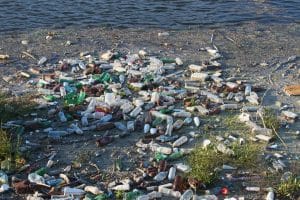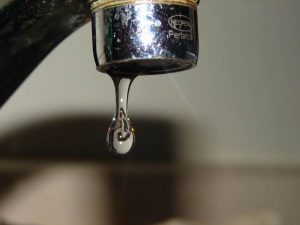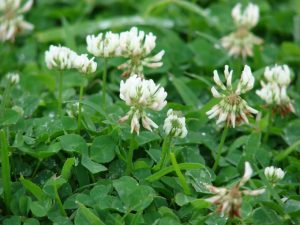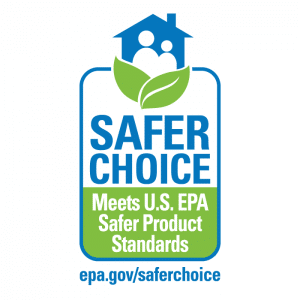Earth Day 2016 — 10 Simple Steps to Improve the Environment
 Earth Day, which falls on April 22 each year, is celebrated globally by over one billion people and is largely credited with being the catalyst for the modern environmental movement. The first Earth Day was celebrated in the United States in 1970, and was quickly followed by passage of the Clean Air Act later in 1970, the Clean Water Act in 1972, and the Endangered Species Act in 1973. In 1990, Earth Day expanded to a global level, being celebrated in 141 countries and bringing environmental issues to the forefront of the global scene. Earth Day has since become the world’s largest global observance.
Earth Day, which falls on April 22 each year, is celebrated globally by over one billion people and is largely credited with being the catalyst for the modern environmental movement. The first Earth Day was celebrated in the United States in 1970, and was quickly followed by passage of the Clean Air Act later in 1970, the Clean Water Act in 1972, and the Endangered Species Act in 1973. In 1990, Earth Day expanded to a global level, being celebrated in 141 countries and bringing environmental issues to the forefront of the global scene. Earth Day has since become the world’s largest global observance.
While Earth Day boasts some impressive statistics, simple changes are still the easiest and most effective way to practice environmentalism in our daily lives. If all one billion people who celebrate Earth Day were to implement just one small change, the cumulative effect would be monumental. At Tata & Howard, we are big believers in continuously improving our personal habits in support of the environment, in the form of small steps. For example, this year we expanded our recycling efforts to include comprehensive, single stream recycling, and we replaced the corporate office’s Keurig with an environmentally-friendly Bean2Cup brewer. So in celebration of Earth Day, we’ve compiled 10 simple steps to improve our environment that we can all easily implement in our daily lives:

1. Eliminate the use of paper plates and plastic utensils
Paper plates are made from virgin wood, contributing to deforestation, and are manufactured by paper mills that use toxic chemicals that can contaminate waterways. Speaking of water, did you know that it takes half a gallon of water to produce ONE 10-inch, medium-weight dinner plate? And plastic utensils are no better. Plastic cutlery requires petroleum and chemicals to produce, fossil fuels to transport, and is typically made from non-recyclable plastic.
2. Use a refillable water bottle — and fill it with tap water!
Most families toss almost 90 pounds of plastic in the trash every year, and plastic takes about 500 years to biodegrade. An abysmal one in seven plastic bottles is recycled, contributing heavily to the world’s plastic pollution problem. In addition, bottled water is hardly any better than tap water in terms of quality and safety. Bottled water costs more per gallon than gasoline, even though it is very frequently just tap water with some extra minerals thrown in for taste. Drinking tap water from a refillable water bottle is smart not only for the environment, but also for your health — and your wallet.
3. Choose reusable over disposable
As mentioned, paper and plastic both have a significantly negative impact on the environment. Instead, bring your own reusable bags to the grocery store, use cloth napkins instead of paper, replace paper towels with microfiber cloths, and choose cloth diapers for baby.
 4. Repair leaky faucets and toilets
4. Repair leaky faucets and toilets
Leaky toilets can waste up to 200 gallons of water per day — or the equivalent usage of an entire family of four — and leaking faucets can waste up to 3,000 gallons of water per year. Repairing these leaks will help save our world’s most precious resource, and will also lower your water bill.
5. Collect rainwater for use in gardens
Collecting rainwater is easy with a rain barrel, which catches stormwater runoff from rooftops. This collected water can be used later to water lawns, gardens, and flower beds. Rain barrels come in a variety of styles and colors, and can make a beautiful addition to your landscaping while helping to protect the environment.
6. Turn off and unplug all electronics when not in use
Computers, cell phones, printers, video gaming consoles, tablets, wearable fitness trackers — these all depend on electricity, and are often left plugged in and running, even when not in use. Completely shutting down and unplugging these devices when not in use will help to reduce your carbon footprint — and your electric bill.
7. Buy only fair-trade, sustainable coffee
Traditionally grown coffee is an environmental nightmare: it is one of the largest contributors to the decimation of our world’s rainforests, is the second-most pesticide laden food crop (second only to tobacco), and is often dependent on unfair labor practices. By choosing fair trade, eco-certified coffee, you are assuring that the coffee you are drinking is both environmentally friendly and humane. Not one to brew your own joe? Bring a reusable mug when visiting your local coffee shop.

8. Green up your lawn
No, not with fertilizer — with ground cover! Outdoor watering accounts for over 30% of household water usage in the United States, and planting ground cover can reduce that outdoor water usage as much as 50%. Ground cover does not require supplemental watering, remains green even during times of moderate drought, and helps prevent soil compaction. In the northeast, white clover is a pretty and popular choice.
9. Start a compost pile
Composting our vegetable and lawn scraps helps the environment in many ways. Organic waste in landfills is typically covered by trash and is therefore forced to decay in an airless state. This anaerobic decay produces methane gas, which is 21 times more potent than carbon dioxide. Therefore, composting our vegetable and lawn scraps helps to minimize the effect that landfills have on climate change while also reducing the speed at which landfills are, well…filled. Also, compost helps to feed and improve the soil, minimizing the need for chemical fertilizers.
 10. Switch to eco-friendly cleaning products
10. Switch to eco-friendly cleaning products
Traditional cleaning products rely heavily on synthetic chemicals, which are now understood to be dangerous to both the environment and our health. This year, EPA launched an initiative called Safer Choice to help individuals and businesses choose more environmentally friendly products. Safer cleaning products for every type of use, from stainless steel to carpet to laundry to dish soap, can be found on EPA’s Safer Choice website.
These are just a few ways in which we can do our part to green up the environment and to reduce our carbon footprint. This Earth Day, let’s all vow to make a few simple, small changes to improve the environment in which we all live. While one person changing one habit may be seemingly insignificant, one billion people changing that same one habit would have an unprecedented impact on the health of our world. Happy Earth Day!
